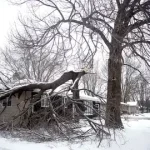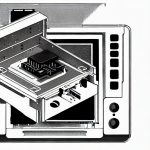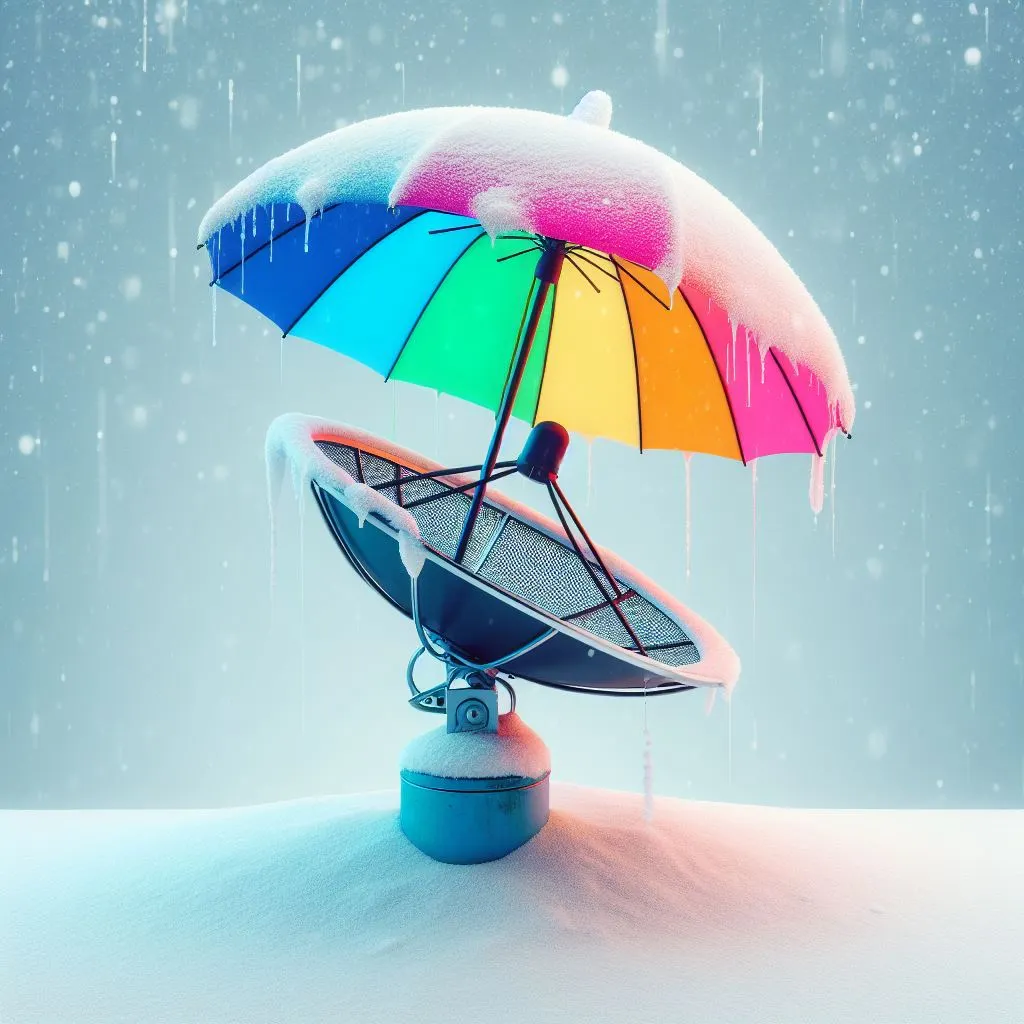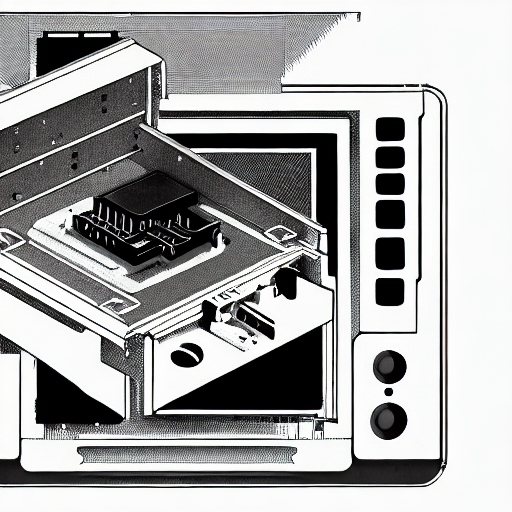When it comes to maintaining a clear signal for your satellite dish during the winter months, preventing snow from sticking to it is crucial. There are several effective solutions to this issue, such as installing a satellite dish heater or using heat tape. These options work by keeping the dish surface above freezing temperatures, preventing snow and ice buildup. While dish covers made of nylon material can also help in minimizing accumulation, it is essential to avoid using non-stick cooking sprays or Rain-X, as they can attract dirt and pollen, leading to further issues. By utilizing the right tools and techniques, you can ensure uninterrupted satellite signal reception throughout the snowy season.
Understanding Satellite Dish Heaters
The Basics of Satellite Dish Heaters
Satellite dish heaters are essential for keeping snow and ice off your satellite dish during the winter months. These heaters are simple to install and come in different sizes to fit various satellite dish brands like DISH, DIRECTV, Hughesnet, and Viasat. They automatically heat up once temperatures drop below freezing, ensuring that your satellite internet or TV signal remains uninterrupted.
How Satellite Dish Heaters Work
Satellite dish heaters, like the HotShot satellite dish heater, work by keeping the surface of your dish above freezing temperatures, preventing snow and ice accumulation that can disrupt your satellite signal. They are designed to automatically turn on when needed and off when not in use to conserve energy. While dish covers made of fitted nylon material can also help prevent snow and ice buildup, dish heaters are more effective in ensuring uninterrupted satellite service during winter months.
Selecting the Right Satellite Dish Heater
When selecting the right satellite dish heater, it is important to consider the size of your dish to ensure a proper fit. HotShot is a reputable brand that offers various satellite dish heaters suitable for both satellite TV and internet dishes. These heaters are designed to clear snow and ice effectively, allowing you to enjoy reliable satellite service throughout the winter. Additionally, Starlink satellite dishes come with built-in heaters, eliminating the need for a separate heater installation and ensuring optimal performance in cold weather conditions.
The Role of Heat Tape in Preventing Snow Accumulation

What is Heat Tape?
Heat tape is a specialized cable designed to produce heat when plugged in. It is commonly used to prevent snow and ice buildup on various surfaces, including satellite dishes. By wrapping heat tape around the dish, it helps to melt snow and ice, ensuring that the satellite signal remains clear and uninterrupted during winter weather conditions.
Installing Heat Tape on Your Satellite Dish
Installing heat tape on your satellite dish requires careful planning and attention to detail. Begin by wrapping the tape around the dish, ensuring it covers the entire surface. Secure the tape in place using clamps or adhesive to prevent it from coming loose. It is important to follow the manufacturer’s instructions for proper installation to ensure effective snow prevention.
Safety Tips for Using Heat Tape
When using heat tape on your satellite dish, it is important to follow safety guidelines to prevent damage and ensure optimal performance. Avoid using abrasive cleaning supplies on the dish, as this can damage the surface and reduce the effectiveness of the heat tape. Additionally, refrain from spraying the dish directly with water, as this can interfere with the heating process. By following these safety tips, you can protect your satellite dish and maintain a clear signal.
When exploring satellite dish covers, it is essential to understand the benefits they offer. Satellite dish covers are designed to prevent ice buildup and help keep snow off the dish. While they can be beneficial in certain situations, it is important to note that they may interfere with the signal. In such cases, opting for a satellite dish heater or heat tape might be a better solution.
Types of Dish Covers Available
There are various types of dish covers available in the market, each with its own set of features and benefits. While dish covers can help prevent snow accumulation on the dish, they may not be the most effective solution in areas with heavy snowfall. It is crucial to carefully consider the pros and cons of using a dish cover versus investing in a satellite dish heater or heat tape for better snow removal and signal maintenance.
Installation Guide for Satellite Dish Covers
When it comes to installing satellite dish covers, it is important to follow proper guidelines to ensure optimal performance. Dish covers are typically made of weather-proof fabric and can be easily slipped over the dish like a sock. They create a smooth surface that prevents significant snow and ice buildup. While they may not be as effective as dish heaters, covers are easy to install and cost-effective.
Key Installation Steps:
- Ensure the dish cover fits properly over the dish
- Secure the cover in place to prevent it from slipping off
- Regularly check the cover for any damages or wear and tear
Overall, exploring satellite dish covers can provide numerous benefits for dish owners. Whether opting for a cover or a heater, it is important to choose the option that best suits your needs and ensures uninterrupted signal transmission during inclement weather conditions.
Special considerations for Starlink satellite dishes include built-in heaters and optimizing performance in winter conditions. Starlink satellite dishes come equipped with a built-in heater that can be controlled through the Starlink app, allowing users to manually turn it on or set it to automatically come on when temperatures drop. The heater is designed to detect snow and ice buildup and melt it without posing a danger to animals or significantly impacting electricity bills. Additionally, for those living in areas with heavy snowfall, manually clearing the dish may still be necessary to maintain a stable internet connection. To further optimize performance in winter, users can preheat the dish ahead of incoming storms and be mindful of the dish’s operating temperature range to prevent thermal shutdown.
Built-in Heaters in Starlink Dishes
Starlink satellite dishes are equipped with built-in heaters that can be controlled through the Starlink app. These heaters are designed to detect snow and ice buildup and melt it without causing harm to animals or significantly increasing electricity bills. Users have the option to manually turn on the heater or set it to automatically activate when temperatures drop. This feature is especially useful in areas with heavy snowfall, where maintaining a clear dish is crucial for uninterrupted internet connectivity.
Optimizing Performance of Starlink Dishes in Winter
When it comes to optimizing the performance of Starlink dishes in winter, it is essential to take proactive measures. Users can preheat the dish before anticipated snowstorms to prevent snow and ice buildup, ensuring a clear signal. It is also important to be aware of the dish’s operating temperature range to avoid thermal shutdowns. Additionally, following manufacturer’s guidelines for maintenance and cleaning the dish with gentle methods can help prolong its lifespan and performance during winter conditions.
Additional Tips for Winter Maintenance:
- Clean the dish with soft-bristle brushes and gentle cleaning solutions to prevent damage.
- Avoid using high-pressure water sprays, as they can cause harm to the dish.
- Consider investing in accessories like dish covers or heaters to prevent snow and ice accumulation.
Overall, maintaining a Starlink satellite dish in winter requires special attention to built-in heaters and proactive measures to optimize performance. By following proper maintenance techniques and utilizing accessories when necessary, users can ensure a reliable internet connection throughout the winter season.
Why to Avoid Non-Stick Cooking Sprays and Rain-X

The Downside of Using Household Products
When it comes to maintaining your satellite dish during snowy and icy conditions, it is crucial to avoid using non-stick cooking sprays like PAM. While these products may offer a quick fix for preventing snow buildup, they can actually harm the special coatings on your dish, leading to signal loss and potential equipment fees from your provider.
Instead of resorting to household products, it is recommended to invest in alternative solutions such as satellite dish heaters or heat tape. These specialized products are designed to safely and effectively keep snow and ice off your dish without causing any damage.
Potential Risks and Damages
Using household products like WD-40 or silicone sprays on your satellite dish can pose significant risks and damages. These products can compromise the weatherproofing measures meant to protect your dish from the elements, resulting in signal loss or costly equipment damage. It is best to steer clear of these products and opt for safer alternatives such as satellite dish heaters.
Satellite dish heaters are specifically designed to provide reliable and convenient snow prevention without causing any harm to your equipment. By choosing the right products, you can ensure the longevity and proper functioning of your satellite dish.
Alternative Solutions for Snow and Ice Prevention
When it comes to preventing snow and ice buildup on your satellite dish, it is essential to consider alternative solutions. While satellite dish covers may seem like a practical option, they can interfere with your internet or TV signal. Instead, investing in a satellite dish heater or heat tape is a more reliable and effective way to keep snow from sticking to your dish.
- Regularly clean your satellite dish with caution using appropriate tools
- Gently brush off any snow or ice with a soft brush or warm water
- Invest in satellite dish heaters or heat tape for reliable snow prevention
Maintaining a Clear Signal
Regular maintenance of your satellite dish is key to ensuring optimal performance, especially in regions prone to heavy wintry weather. By following proper cleaning and clearing techniques, you can prevent signal disruptions caused by snow and ice buildup. Understanding the risks of using improper cleaning products like non-stick cooking sprays can help you avoid damaging your satellite dish.
By prioritizing the maintenance of your satellite dish and utilizing appropriate tools and products, you can keep your dish clear of snow and ice, ensuring reliable service throughout the winter months.
Maintaining your satellite dish in winter is essential to ensure a reliable signal during inclement weather. Regular maintenance tips can help prevent signal disruptions caused by snow, ice, and dirt buildup. To start, gently clean the dish with a soft brush and warm water to remove any debris. Avoid using abrasive cleaning supplies or spraying the dish directly with water, as this can cause damage. Investing in accessories like dish covers or heaters can also help keep your satellite dish clear of snow and ice throughout the winter season.
Troubleshooting Common Issues
When troubleshooting common issues with your satellite dish in winter, it’s important to handle snow and ice accumulation carefully to avoid damaging the dish. Use gentle methods like brushing off snow with a soft brush or applying warm water to melt ice. Avoid using tools like ice scrapers or applying excessive force, as this can lead to signal disruptions and potential damage. Understanding the best practices for clearing snow and ice from your satellite dish can help maintain a strong signal during winter weather conditions.
Professional Help and When to Seek It
Seeking professional help for satellite dish maintenance is crucial when DIY solutions are not effective. If you encounter persistent issues like signal loss or equipment freezing, it may be time to contact a professional technician for assistance. Professional help can ensure that any underlying issues are properly diagnosed and addressed, preventing further damage to the equipment. Knowing when to seek professional assistance and not attempting to fix complex issues on your own can save you time, money, and frustration in the long run. By combining regular maintenance, troubleshooting tips, and professional help when needed, you can maintain your satellite dish and ensure a smooth signal throughout the winter months.
conclusion
In conclusion, when it comes to keeping snow from sticking to your satellite dish, there are several options to consider. Satellite dish heaters and heat tape are effective tools for melting snow and ice, ensuring a clear signal during winter months. Satellite dish covers made of fitted nylon material can also help prevent snow buildup and maintain signal clarity. However, it is important to follow proper installation guidelines and special considerations for specific satellite dishes, such as Starlink dishes with built-in heaters. It is crucial to avoid using household products like non-stick cooking sprays and Rain-X, as they can damage the special coatings on your dish and lead to signal loss. By properly maintaining your satellite dish and seeking professional help when needed, you can ensure a reliable signal throughout the winter months. Remember to prioritize maintenance and take proactive measures to prevent snow and ice accumulation on your satellite dish for uninterrupted satellite service during inclement weather.










